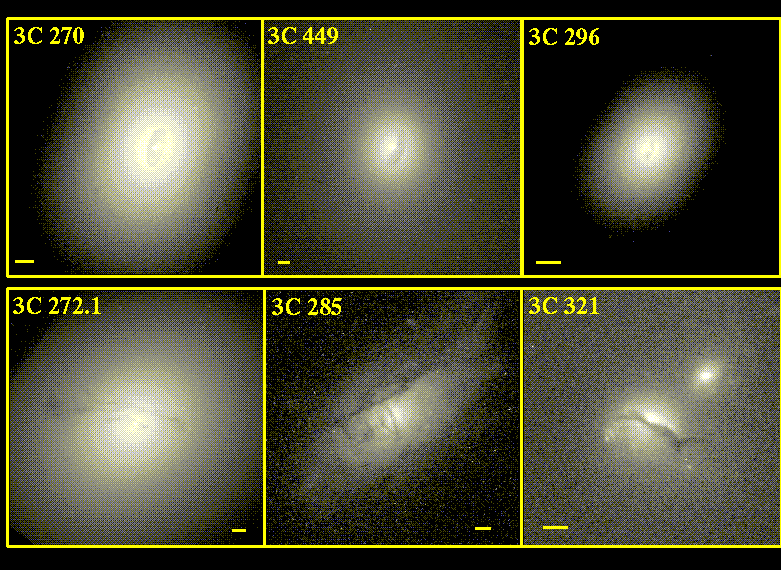
One remarkable finding from HST images, barely anticipated from the ground, is that dust structures close to the nucleus are prevalent in radio galaxies. These structure often take the form of disks or rings, at right angles to the radio jets and thus fitting with the general picture of jets collimated by the influence of an accretion disk surrounding the central objects. These are far too large to be the active, hot accretion disk itself, which should extend to no more than light-months in radius, but may represent material which has already settled into its orbital plane and will eventually migrate inwards into such an accretion disk. These dust features are difficult to resolve from the ground, with diameters from 0.95 arcsecond in 3C 296 to 3.5 in 3C 449. These correspond to linear diameters of 170 parsecs (3C 272.1) to 3.7 kiloparsecs in 3C 285, so that we are seeing a wide range of physical phenomena. One common interpretation is that many of these galaxies have undergone mergers or strong interactions, so that new gas and dust has been introduced into the system, which we see as it settles into a disk around the central region of the radio galaxy, possibly fuelling the nuclear activity.
These are red-light (about 7000-Angstrom) images taken largely as part of a "snapshot" imaging program using the PC chip of WFPC2 on HST, provided by Stefi Baum and Andre' Martel. The areas shown here are either 11.6 or 23.3 arcseconds on a side, with north in each case at the top. A logarithmic intensity scale is used to make detail visible over a wide brightness range. The scale bars indicate one arcsecond.